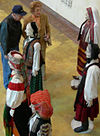
A loom is a device used to weave cloth and tapestry. The basic purpose of any loom is to hold the warp threads under tension to facilitate the interweaving of the weft threads. The precise shape of the loom and its mechanics may vary, but the basic function is the same.

The Nahua are an Indigenous group of Mesoamerican people inhabiting the western and central areas of present-day El Salvador. They speak the Nawat language, which belongs to the Nahuan language branch of the Uto-Aztecan language family. There are very few speakers of the language left, which is a reason for the current efforts being made to revitalize it.

The quechquemitl is a garment which has been worn by certain indigenous ethnicities in Mexico since the pre-Hispanic period. It usually consists of two pieces of rectangular cloth, often woven by hand, which is sewn together to form a poncho or shawl like garment, which is usually worn hanging off the shoulders. It can be constructed of various different fabrics, often with intricate weaves, and is typically highly decorated, most often with embroidery.

Huipil is the most common traditional garment worn by indigenous women from central Mexico to Central America.

The culture of Guatemala reflects strong Mayan and Spanish influences and continues to be defined as a contrast between poor Mayan villagers in the rural highlands, and the urbanized and relatively wealthy mestizos population who occupy the cities and surrounding agricultural plains.

Ixil (Ixhil) is a Mayan language spoken in Mexico and Guatemala. It is the primary language of the Ixil people, which mainly comprises the three towns of San Juan Cotzal, Santa Maria Nebaj, and San Gaspar Chajul in the Guatemalan highlands and numerous towns in the states of Campeche and Quintana Roo in southeast México. There is also an Ixil speaking migrant population in Guatemala City, Mexico City and the United States. Although there are slight differences in vocabulary in the dialects spoken by people in the three main guatemalan Ixil towns, they are all mutually intelligible and should be considered dialects of a single language. According to historical linguistic studies Ixil emerged as a separate language sometime around the year 500AD.

Piña is a traditional Philippine fiber made from the leaves of the pineapple plant. Pineapples are indigenous to South America but have been widely cultivated in the Philippines since the 17th century, and used for weaving lustrous lace-like luxury textiles known as nipis fabric. The name is derived from Spanish piña, meaning "pineapple".
Maya textiles (k’apak) are the clothing and other textile arts of the Maya peoples, indigenous peoples of the Yucatán Peninsula in Mexico, Guatemala, Honduras, El Salvador and Belize. Women have traditionally created textiles in Maya society, and textiles were a significant form of ancient Maya art and religious beliefs. They were considered a prestige good that would distinguish the commoners from the elite. According to Brumfiel, some of the earliest weaving found in Mesoamerica can date back to around 1000-800 B.C.E.

The Museo Popol Vuh is home to one of the major collections of Maya art in the world. It is located on the campus of the Universidad Francisco Marroquín in Zone 10, Guatemala City. The museum is known for its extensive collection of pre-Columbian and colonial art of the Maya culture.
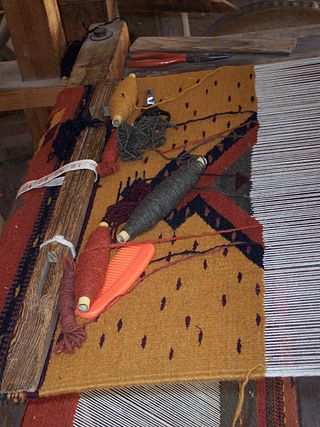
The state of Oaxaca in southern Mexico has a noteworthy tradition of finely crafted textiles, particularly handmade embroidery and woven goods that frequently use a backstrap loom. Oaxaca is home to several different groups of indigenous peoples, each of which has a distinctive textile tradition.
Museo de Trajes Regionales is located in San Cristobal de las Casas, Chiapas, Mexico. The museum displays more than 100 costumes and dress from the indigenous populations of Chiapas. This is unique because typically all clothing and personal possessions are buried with the dead. Jewelry, musical instruments, costume accessories, religious objects, hats, masks, animal skins and statuettes are on display. The tour is given by the museum collector and owner Sergio Castro Martinez, a knowledgeable local humanitarian. He describes the locations, dress, ceremonies, ways and daily life of the indigenous.

The textiles of Mexico have a long history. The making of fibers, cloth and other textile goods has existed in the country since at least 1400 BCE. Fibers used during the pre-Hispanic period included those from the yucca, palm and maguey plants as well as the use of cotton in the hot lowlands of the south. After the Spanish conquest of the Aztec Empire, the Spanish introduced new fibers such as silk and wool as well as the European foot treadle loom. Clothing styles also changed radically. Fabric was produced exclusively in workshops or in the home until the era of Porfirio Díaz, when the mechanization of weaving was introduced, mostly by the French. Today, fabric, clothes and other textiles are both made by craftsmen and in factories. Handcrafted goods include pre-Hispanic clothing such as huipils and sarapes, which are often embroidered. Clothing, rugs and more are made with natural and naturally dyed fibers. Most handcrafts are produced by indigenous people, whose communities are concentrated in the center and south of the country in states such as Mexico State, Oaxaca and Chiapas. The textile industry remains important to the economy of Mexico although it has suffered a setback due to competition by cheaper goods produced in countries such as China, India and Vietnam.
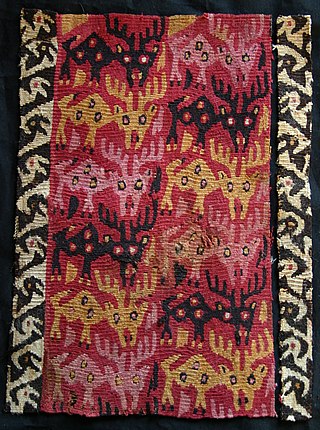
The textile arts of the Indigenous peoples of the Americas are decorative, utilitarian, ceremonial, or conceptual artworks made from plant, animal, or synthetic fibers by Indigenous peoples of the Americas.

Amuzgo textiles are those created by the Amuzgo indigenous people who live in the Mexican states of Guerrero and Oaxaca. The history of this craft extends to the pre-Columbian period, which much preserved, as many Amuzgos, especially in Xochistlahuaca, still wear traditional clothing. However, the introduction of cheap commercial cloth has put the craft in danger as hand woven cloth with elaborate designs cannot compete as material for regular clothing. Since the 20th century, the Amuzgo weavers have mostly made cloth for family use, but they have also been developing specialty markets, such as to collectors and tourists for their product.
José Luis Álvarez was a Guatemalan artist who, from 1976 until his death, lived and painted in Antigua. He became known as one of the best landscape artists from Guatemala and was part of a generation of prolific artists who, as exponents of national art, defined the Guatemalan School. Álvarez developed a distinguished wide impasto technique, using the spatula, and a great delicacy in the use of color.

One of the best-known arts of the Mapuche is their textiles. The tradition of Mapuche textile production dates back to pre-Hispanic times and continues up to this day. Prior to the 20th century Mapuche textiles and ponchos in particular were important trade items.

Carmen Lind Pettersen was a Guatemalan painter known for her watercolors of the landscape and traditional costumes of Guatemala, as well as her book, the most complete reference work on the textiles of the Guatemalan high plateau. Her works were often listed in guidebooks for the country and in 1976, she was awarded the Order of the Quetzal for her artistic merit. Some of her paintings are in the permanent collection of the Ixchel Museum of Indigenous Textiles and Clothing.
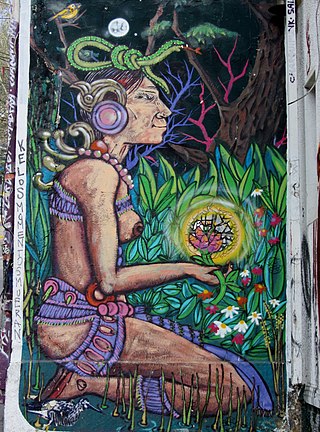
Paula Nicho Cumez is a Mayan-Guatemalan artist. Cumez is inspired by Mayan tradition and culture and focuses on expressing the context of native women’s experience in her artwork; additionally, Cumez was inspired by the Popol Vuh. Cumez is known for creating an artist community of women within the Tz’uthil Mayan artists, named "Kaqchikel Surrealist Painters.” Additionally, a short film was made about Paula Nicho Cumez’s background called Del Azul al Cielo.
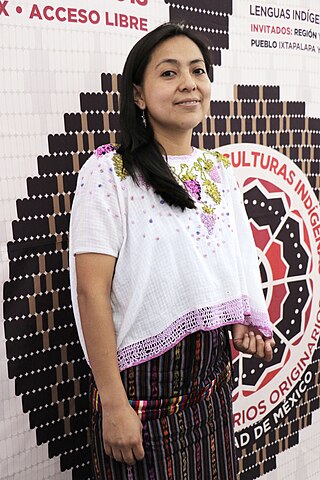
María Jacinta X. Riquiac is a Maya Kʼicheʼ anthropologist and indigenous rights activist from Guatemala.

Guatemalan art refers to all forms of visual art associated with a Guatemalan national identity either because they are created within Guatemala, for Guatemalans, or by Guatemalans. The visual arts in Guatemala consist largely of weaving, muralism, painting, architecture, and the performing arts. Most analysis of Guatemalan and Indigenous artwork focuses on the artform of weaving, but contemporary Guatemalan visual art largely consists of painting, muralism, and more that can convey modern social values as well as ancestral indigenous history. Historically, art in Guatemala has combined the mythological heritage of the Indigenous Maya people with the country's politics. Beyond Guatemala, Guatemalan Indigenous artwork is also sometimes referred to as "art naïf," "primitivism," 'traditional art," "Maya art," and "costumbrismo".

















